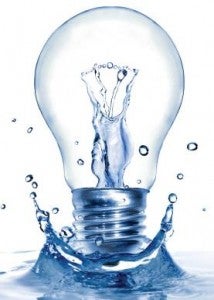The energy-water nexus has been gaining traction around the globe, including serving as the theme to this year’s World Water Day, and now we are finally seeing some movement on Capitol Hill.
In January, Senators Lisa Murkowski (R-Alaska) and Ron Wyden (D-Oregon) introduced S. 1971, the Nexus of Energy and Water for Sustainability Act of 2014, or NEWS Act of 2014. Foremost, the bill would establish an interagency coordination committee focused on the nexus between energy and water production, use, and efficiency. The NEWS Act of 2014 also proposes a cross-cutting budget mechanism to allow policymakers to see where funding is needed across various energy-water initiatives.
While the bill faces a particularly steep slope to passage (7% compared to an average overall 11% passage rate, according to GovTrack, a government transparency tracker), that it has been introduced at all is the first sign of a more comprehensive approach to the energy-water nexus at the highest levels.
Other encouraging federal developments include a new white paper, The Energy-Water Nexus: Interlinked Resources That Are Vital for Economic Growth and Sustainability, produced by Senator Murkowski’s office and released last week. In her keynote address introducing the white paper, Senator Murkowski called on the Federal Government to partner with the private sector and academia to tackle the energy-water nexus. The paper’s findings, combined with international attention, demonstrate there has never been a better time to tackle the energy-water nexus.
Findings and recommendations
Unfortunately, all regions of the U.S. will be impacted by water shortages in the coming years. States currently engaged in the natural gas boom, specifically Colorado, North Dakota, West Virginia, Wyoming, and Texas, will face particular challenges related to increased water usage associated with fracking as well as current and future drought conditions. Many water-stressed regions are also set to be the site of projected thermoelectric power plants, further exacerbating conditions that require power plants to curtail or shut down production as a result of water shortages or increased water temperature. And in California (as well as several other western states), where hydroelectric power provides an important source of electricity, lower water flows will critically impact this fragile energy resource.
The energy sector is very aware of the impacts of water shortage on its industry, but the water sector has farther to go in addressing the nexus. Senator Murkowski’s white paper highlights an example from California that looks at the embedded energy in different water uses. Not surprisingly, treating water to make it potable is the most energy-intensive, but that could be alleviated by using renewable energy instead of traditional energy sources to desalinate water for human consumption.

Source: California Energy Commission, “California’s Water-Energy Relationship, Final Staff Report, CEC-700-2005-011-SF”, November 2005
Despite such dry predictions, the white paper offers several suggestions to begin addressing the energy-water nexus.
- Address Data Gaps: Reliable and comprehensive data on the energy-water nexus is sorely lacking. Without this information, it is difficult for policymakers and utilities to make informed decisions on operations, as well as research and development investments.
- Document and Publicize Best Practices: As with the data gaps, there appears to be no comprehensive best practices compiled in the energy-water arena. This information could help innovate technologies and spur the adoption of more effective data collection.
- Promote Federal Leadership and Public-Private Partnerships: Many states or communities are already working to solve the energy-water nexus, but the Federal Government has not yet played a role. Leadership from the top could provide a powerful incentive to innovate. Additionally, public-private partnerships promote collaboration and provide conduits for spurring innovation and disseminating information.
- Encourage Generation and Adoption of More Efficient Technologies and Practices: The Federal Government is in a unique position to encourage more innovative research and development in the energy-water arena, as it has in countless other environmental and scientific challenges, such as acid rain, space exploration, and medicine.
- Federal Coordination: As national policy coordinator, the Federal Government could increase interaction between different stakeholders to help them learn from one another as well as reduce barriers to adoption of efficient technologies and practices. This gets to the heart of the NEWS Act—establishing a more formalized coordination of all agencies that have a stake in energy-water issues at the federal level to streamline policy.
The energy-water nexus bill may face an uphill battle to passage in the current Congress, but it is a valuable first step. More importantly, we can’t wait on Congress to move — the recommendations included in this white paper are excellent starting points for actions that can begin without the Federal Government (although a coordinating hand would certainly ease the burden). Utilities, cities, water districts, and other stakeholders can start collecting data and documenting best practices to overcome the data gap and encourage better coordination among leaders. And concerned citizens can let their congressional representatives know how critical of an issue this is. If we don’t take care of our water and energy needs more efficiently, at a local and national level, we’re going to be left high and dry.











